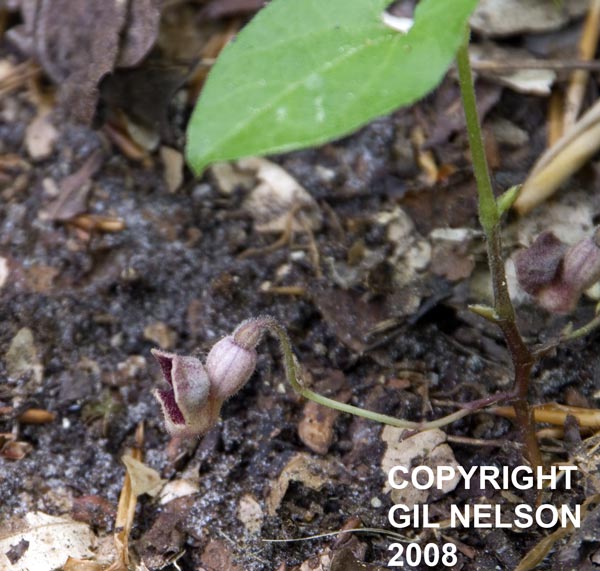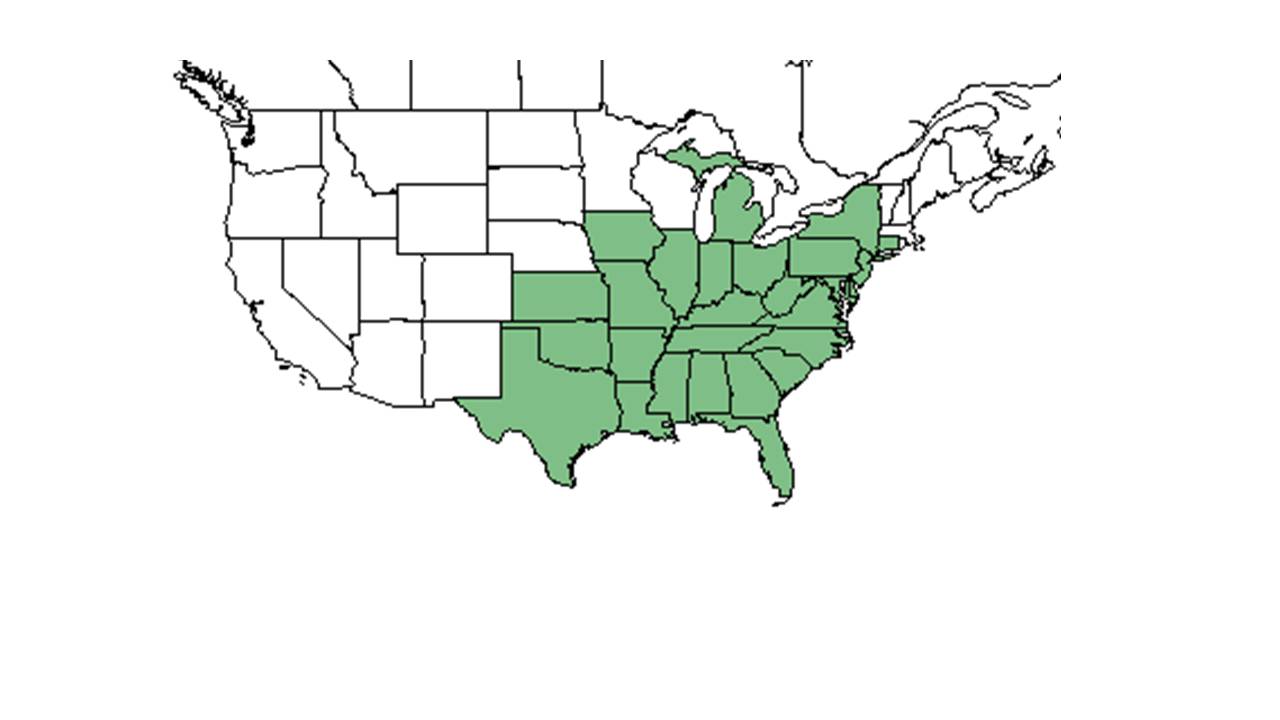Difference between revisions of "Endodeca serpentaria"
(→Ecology) |
|||
| Line 41: | Line 41: | ||
<!--===Fire ecology===--> <!--Fire tolerance, fire dependence, adaptive fire responses--> | <!--===Fire ecology===--> <!--Fire tolerance, fire dependence, adaptive fire responses--> | ||
<!--===Pollination===--> | <!--===Pollination===--> | ||
| − | + | ||
| + | ===Use by animals=== <!--Herbivory, granivory, insect hosting, etc.--> | ||
| + | This species attracts butterflies, and is a larval host for the pipevine swallowtail (''Battus philenor'').<ref name= "lady bird"/> | ||
<!--===Diseases and parasites===--> | <!--===Diseases and parasites===--> | ||
Revision as of 18:42, 6 May 2019
| Endodeca serpentaria | |
|---|---|

| |
| Photo taken by Gil Nelson | |
| Scientific classification | |
| Kingdom: | Plantae |
| Division: | Magnoliophyta - Flowering plants |
| Class: | Magnoliopsida – Dicotyledons |
| Order: | Aristolochiales |
| Family: | Aristolochiaceae |
| Genus: | Endodeca |
| Species: | E. serpentaria |
| Binomial name | |
| Endodeca serpentaria L. | |

| |
| Natural range of Endodeca serpentaria from USDA NRCS Plants Database. | |
Common names: Turpentine-root, Virginia snakeroot, Serpent birthwort
Contents
Taxonomic notes
Synonyms: Aristolochia serpentaria (L.); A. hastata Nuttall; A. serpentaria L. var. hastata (Nuttall) Duchartre; A. convolvulacea Small; Endodeca hastata (Nuttall) Rafinesque
Description
A description of Endodeca serpentaria is provided in The Flora of North America. The variation of this species needs to be further studied.[1]
Distribution
It is found as north as Connecticut, west to Illinois, and south to central peninsular Florida, then west to Texas.[1]
Ecology
Habitat
E. serpentaria is commonly found in mesic to dry forests, where it is more likely restricted to mesic areas over acidic substrates, and ranging into drier soils over calcareous or mafic substrates as well.[1] This species grows in mesic woodlands, rich mixed woodlands along creeks, wooded floodplains, and hardwood slopes. It is found in floodplains or slopes in soils varying from dry to wet sandy loam. This species has also been spotted in disturbed areas such as fire breaks. It thrives in shaded environments as well.[2] Full range of soils include sandy loam, medium loam, clay loam, and clay.[3] It is also listed by the USDA Natural Resources Conservation Service as a facultative upland and upland species, where it most commonly occurs in nonwetland habitats, but can occasionally be found in more mesic than hydric wetland areas.[4]
Phenology
Generally, this species flowers from May until June and fruits from June until July.[1]
Use by animals
This species attracts butterflies, and is a larval host for the pipevine swallowtail (Battus philenor).[3]
Conservation and management
E. serpentaria is listed as threatened by the Connecticut Department of Environmental Protection, by the Illinois Department of Natural Resources, Endangered Species Protection Board, by the Iowa Department of Natural Resources, Parks, Recreation, and Preserves Division, and by the Michigan Department of Natural Resources, Natural Features Inventory. This species is also listed as endangered by the New York Department of Environmental Conservation, Division of Land and Forests.[4]
Cultivation and restoration
Photo Gallery
References and notes
- ↑ 1.0 1.1 1.2 1.3 Weakley, Alan S. Flora of the Southern and Mid-Atlantic States: Working Draft of 21 May 2015. University of North Carolina Herbarium (NCU). PDF. 127.
- ↑ Florida State University Robert K. Godfrey Herbarium database. URL: http://herbarium.bio.fsu.edu. Last accessed: June 2014. Collectors: L. C. Anderson, R. R. Clinebell II, R. K. Godfrey, and M. Jenkins. States and Counties: Florida: Calhoun, Gadsden, Jackson, Lafayette, and Leon. Georgia: Thomas.
- ↑ 3.0 3.1 [[1]] Lady Bird Johnson Wildflower Center. Accessed: May 6, 2019
- ↑ 4.0 4.1 USDA, NRCS. (2016). The PLANTS Database (http://plants.usda.gov, 6 May 2019). National Plant Data Team, Greensboro, NC 27401-4901 USA.